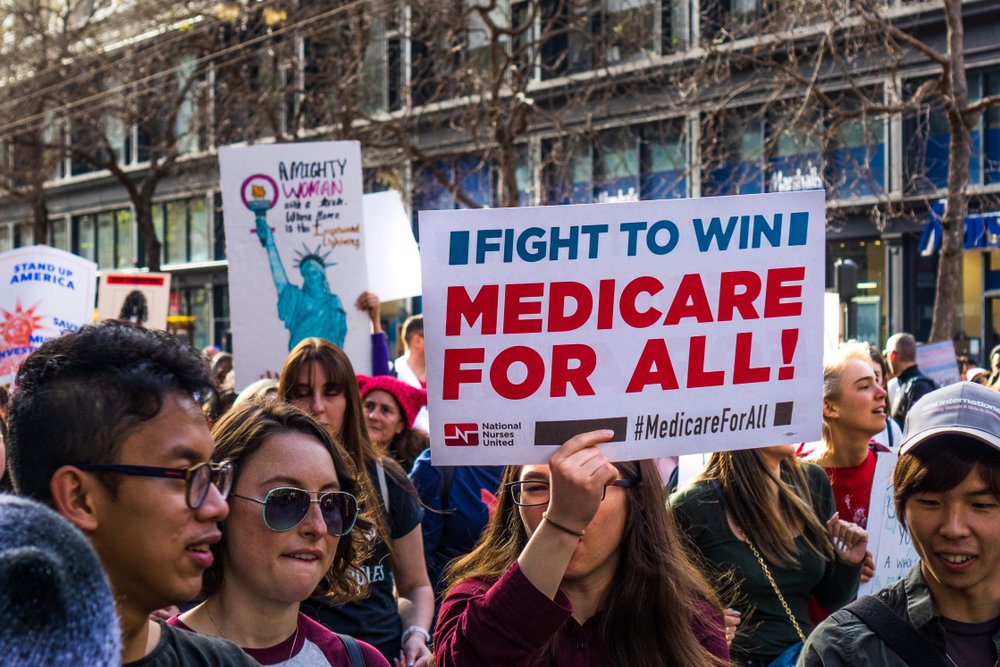
With the 2020 election cycle already moving into high gear, we are hearing a lot about Medicare for all. But is it a serious campaign promise, a catchy bumper sticker or a viable national program?
Supporters suggest it will be a panacea for our nation’s health insurance needs. Others are less sure. And some are downright opposed. So where do we go? As a starting point, there are things we can do to improve health insurance coverage before deciding if we want to reinvent the entire system.
To be honest, when I first heard about Medicare for all, I thought it sounded great. Medicare works well for me, I reasoned, so why not expand it to everyone in the country?
Occam’s Razor notwithstanding, it turns out that the simplest solution may not be the best one. We don’t have consensus around what a Medicare for all plan would look like, how much it should cost and who should pay for it. Public opinion, financial considerations and political realities all come into play.
Public opinion. Most people agree that we need to improve health insurance coverage and make it more affordable. That was the goal of President Barak Obama’s landmark legislation, the Affordable Care Act. Unfortunately, due to some structural flaws in the law followed by willful chipping away at its underpinnings, the ACA has not lived up to all its objectives.
Public opinion about Obamacare hovers around 50 percent — not bad in today’s polarized climate but not a ringing national endorsement either. Enter the rallying cry for Medicare for all, the best new shiny thing.
Some people want an expansion of Medicare as is. Others support a single-payer system, backed by the government, but not necessarily Medicare. And still others like the idea of a public option, as originally envisioned under the ACA, i.e., a government-backed program that competes with all the private ones in the Marketplace.
Those who already pay hefty premiums for their health insurance might be happy to switch to a Medicare for all plan. But not everyone agrees. Remember when President Obama told Americans that under ACA they could keep their health insurance if they liked it? Understandably, people were upset when they found out that wasn’t always true. Under some Medicare for all proposals, we could end up with no private insurance plans. Yet, many people today like the coverage they have through their employer-sponsored plans and want to keep it.
Financial considerations. Medicare, as it now operates, isn’t free. It may not even be cheap, depending on individual circumstances, needs and preferences. Without belaboring all the costs associated with different parts of Medicare — not to mention supplemental or secondary insurance to cover what Medicare doesn’t include — participants may pay hundreds of dollars a month for coverage. There may still be costs not covered by Medicare such as co-pays and vision and dental coverage.
There are also big-ticket items that Medicare doesn’t include such as hospital expenses beyond an established lifetime cap or specialty needs such as at-home intravenous antibiotics. These can add up to lots of money.
Then there’s the cost to the government for a single-payer plan — by some estimates, $ 32 trillion over the course of a decade. If we want the government to foot the bill, we must be prepared to pay higher taxes, and not everyone is on board with that either.
Political realities. Finally, there are political realities to consider. Our current House of Representatives may well be inclined to pass a Medicare for all plan, but the Senate surely will not. The situation might change in 2020, but there will still be strong headwinds opposing such action, including many Republicans and moderates in both houses, the insurance lobby, and other special interests. A total overhaul of our current patchwork system would require reworking the tax code, reordering national priorities and massive restructuring — if not complete elimination — of the health insurance industry.
Assuming all that is even possible, it could take years to accomplish. In the meantime, people who now need health insurance coverage or relief from plans that are either very expensive or have high deductibles with limited coverage will still be left waiting for help.
So, where does that leave us? For one thing, let’s fix the ACA — restore the individual mandate, expand Medicaid to more states and improve Marketplace glitches to make Obamacare work better. And let’s bring back a public option to the Marketplace offerings. It would be attractive to many Americans, provide more competition within the system and likely drive down costs across the board.
We can also broaden Medicaid coverage to include more people who need assistance. And we can allow people to buy into Medicare at a younger age, say 55, instead of making them wait until they are 65 to qualify.
Such steps will take a lot of policy and legislative work, not to mention some horse-trading on Capitol Hill. But changes and improvements to existing programs will be easier and quicker to accomplish than creating a whole new system that is certain to be fraught with enormous complexity and major opposition.
We may find these moves are enough to meet our needs as a nation, or we may find more must be done. A single-payer option could still be the answer we seek, and we can remain open to that possibility.
But let’s hold off on those Medicare for all campaign promises and bumper stickers for now.
Bonnie Friedman is the author of Hospital Warrior: How to Get the Best Care for Your Loved One and can be reached at Hospital Warrior.
Image credit: Shutterstock.com
